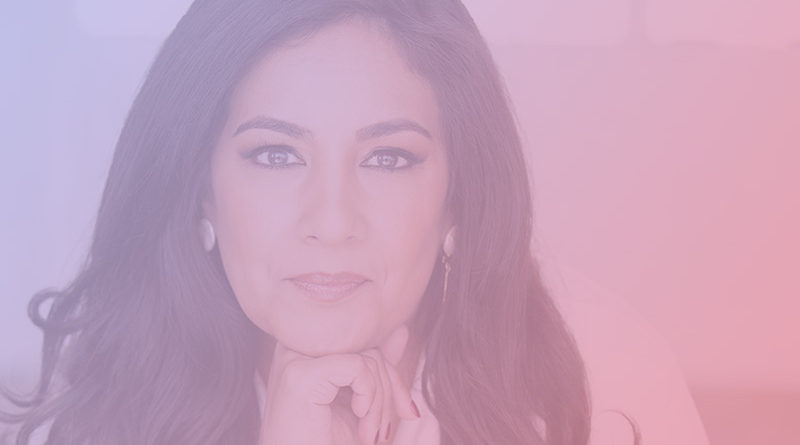SD METRO Magazine interview with Deepa Purushothaman
By Douglas Page
Editor’s Note: This is an edited transcript of SD Metro Magazine’s interview with Deepa Purushothaman. It was edited for brevity and conciseness.
Despite the advancements, it seems things aren’t all that good for working women?
Coming out of the pandemic, there is more of a conversation about childcare and other challenges that make work more difficult. Most women have been taught to fit into the system and that system was designed for a two-person household. Usually, it was the man that went off to work, and historically, generationally, the women who stayed home. They took care of the children. And the model, the way we work, the 45-hour work week is all based on that. We’ve never given it a facelift or an update. Women can rise in the current system. They can fit in, but more of us are asking for a little bit of a larger revolution, so it makes space for more of us to have to adapt less and to really be able to thrive, not just survive.
They’ve got to be somebody else?
Yes, absolutely.
Who do they have to be?
For a lot of them, they’re modeling the white male leaders that have come before them and that’s not who they are. And they get to a very senior place and they’re questioning, was it worth it? Can I keep being this? What have I sacrificed?
And I want to be super clear because my work is not about “Let’s take out all the white male leaders.” That’s not what I’m saying. We need to make space for more than that because otherwise what you’re seeing is a lot of women behaving or adapting or thinking they have to become that white male definition. And then they do it for a couple of years, a decade, and it’s cost them. It’s cost who they are, their identity, their happiness, and they’re no longer willing to do it. And they’re walking out the door.
They look at themselves in the mirror and don’t like what they see?
A lot of us have been taught, “Well, get to the seat, get to the senior seat, and then you can do it your way.” But once they get to that seat, there’s less ability to do it their way because there’s even more expectation that they’re going to behave and conform and be like the people around them. And that’s the dissonance. They’re willing to sacrifice or not do it their own way or hold their tongue or modify what they believe in or how they lead because once they get to the seat, then it will change. What we’re seeing is when they’re the boss, it’s hard to change because they’ve set expectations.
A woman becomes CEO. What price did she pay to get there?
Some have had to really adapt or really present themselves in a certain way, and that’s the challenge of wanting to do it differently. I call it full voice, show up as all of who they are, and they can’t do that because they’ve had to show up in a certain way.
Some of the women I interviewed told me stories about women CEOs not being able to bring other women with them because they didn’t want to be seen as favoring women or if they’re women of color, not wanting to favor women of color, people of color. There are extra lenses that we place on women and people of color. It’s hard to make change because they’re trying to do a good job and because there are so many eyes on them.
How is the experience different for women of color?
I think what we would find is there are more microaggressions. There’s more racism.
What would those include?
A lot of the women of color get their credentials questioned. They’re constantly having to prove who they are and their expertise in a very different way than their colleagues around them.
A lot of Asian women say their names will get confused. For a lot of the Black women, it is credentials. It falls more in that space. It comes down to really having to prove yourself.
So, hold your personality at the door?
That’s the challenge. We are telling women, “You don’t have to do that,” but to get ahead, they’re having to hide that they are running home and juggling their needs at home or that they have these outside activities, or they would prefer to bring more compassion to the workplace, and they’ve put that aside and that’s really the struggle.
Describe the differences of what a woman goes through to be CEO and what she’s able to do versus what a male CEO, what he’s went through and is able to do?
Male CEOs are more able to focus on the work at hand, meaning the operations or the company strategy, more of the day-to-day sort of what we expect traditionally from a CEO. They’re allowed to be more authoritative. They don’t have to explain themselves in the same way. We don’t put them in the, “Do we like you or are you credible?” And for a lot of women, it’s very difficult to be liked and to be credible, whereas for male CEOs, that’s an easier path.
For women CEOs, it’s not just the job they’re doing. We look at how they’re dressed and how they present themselves and how they treat their team, the teams around them, and what they care about outside of work? And do they take on women’s issues?
When I interview people, men will say, “I mentor 12 mentees.” White women will say, “I mentor about 20 to 24 people.” When I interview women of color, it can be upwards of 100 or 200 because there’s no one else in the company or the industry. We just don’t understand how much extra there is for those CEOs or leaders because they’re doing jobs that aren’t part of the traditional job description.
Interview by SD METRO Associate Editor Douglas Page


